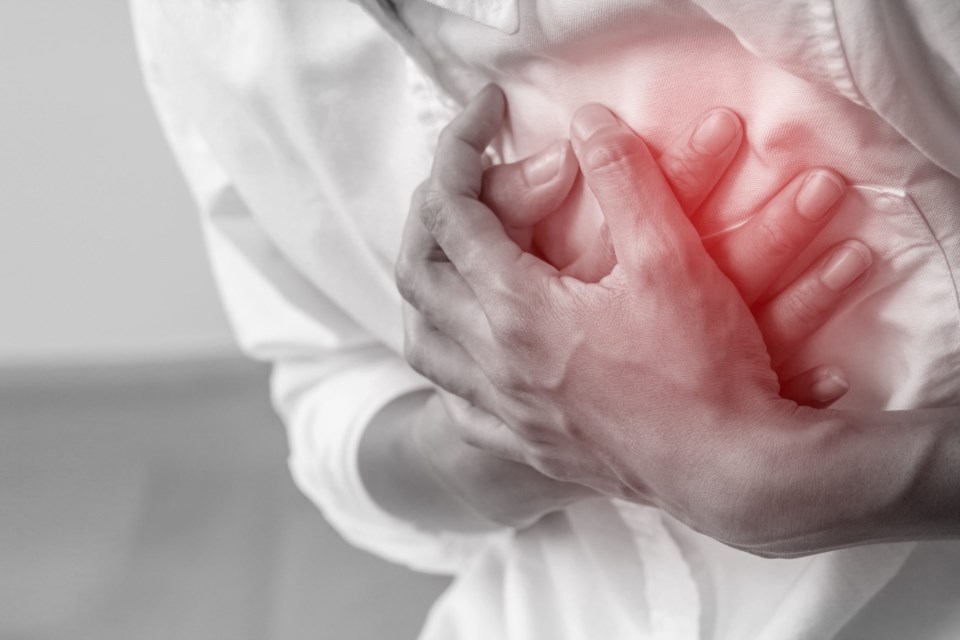You have a good heart. You spend your days working hard and often return home to dedicate your- self to your loved ones and hobbies. You do your best to stay healthy and to live your life to the fullest. But what if all that suddenly came to an end?
Heart disease accounts for 1 in 3 deaths per year in the United States, according to the Center for Disease Control. This makes heart disease the first leading cause of death in the United States and strokes, another cardiovascular ailment, are the fifth leading cause of death.
It is crucial to act fast when stroke symptoms present.
Reacting Fast
Stroke symptoms can vary based on the individual and the part of the brain that is affected, says Rashedul Hasan, MD, vascular neurologist and stroke medical Director on the medical staff at Baylor Scott & White Medical Center - Plano. But, in general, one can follow the American Heart Association and American Stroke Association’s acronym “BEFAST” to identify the most common symptoms.
“B is for ‘balance problem’ meaning a sudden loss of balance or coordination. E is for ‘eye problem’ meaning sudden loss of vision in one or both eyes. F is for ‘face droop’ meaning an uneven face. A is for ‘arm drop’ meaning one arm drifts down. S is for ‘speech difficulty’ meaning trouble speaking or slurred speech. T is for ‘time to call 911,’” says Dr. Hasan.
Elizabeth Fagan, MD, medical director of the Emergency Department at Baylor Scott & White Medical Center - McKinney, recommends looking in a mirror if you are alone because a facial droop cannot always be felt.
Heart Attack.
It is also important to act quickly in the case of a heart attack.
“Symptoms include: chest discomfort that can feel like pressure, squeezing, fullness or pain; pain or discomfort in one or both arms, the back, neck, jaw, or stomach; shortness of breath; and other signs including a cold sweat, nausea, or lightheadedness,” explains Dr. Fagan.
Dr. Fagan says that acting quickly can allow time for life-saving treatments.
“Paramedics can start needed treatments in their home and continue them during the transport to the hospital. Additionally, Emergency Medical Systems can activate the cardiac cath lab to be ready to treat the heart attack or Emergency and Radiology departments can clear the CT scanner for stroke patients. Both actions allow us to restore blood flow to the patients’ hearts/brains more quickly and improve outcomes,” says Dr. Fagan.
Know Your Risk
Stroke risks can be divided into two categories, modifiable (which
can change) and nonmodifiable (which cannot change), according to Dr. Hasan.
“Common modifiable risk factors are hypertension, diabetes, a, atrial fibrillation (A-fib), smoking, illicit drug use, sedentary lifestyle, heavy alcohol intake, diet, sleep apnea, and kidney disease,” says Dr. Hasan. “Nonmodifiable risk factors include male sex, older age, and genetic factors.”
90 percent of first strokes can be prevented by changing the risk factors.
“The best way to know your risk is to have an annual physical check-up by your primary care provider, identify your risk factors, and treat them accordingly,” says Dr. Hasan.
Some risk factors for strokes and heart attacks overlap. According to Sibi Thomas, MD, cardiologist on the medical staff at Baylor Scott & White Medical Center - Centennial, for heart disease the overlapping risk factors include hypertension, high blood cholesterol, diabetes, smoking, obesity, and physical inactivity.
Preventing Heart Disease
“When it comes to heart disease, there are certain factors that cannot be changed like age, ethnicity, and family history,” says Dr. Thomas. “Therefore, the factors that can be changed, controlled, or reduced with lifestyle changes should be the main focus.”
“Some examples of lifestyle changes you can make are to avoid tobacco products, exercise at least 150 minutes per week, and eat a healthy balanced diet made up of fruits and vegetables, whole grains and low-fat proteins such as lean meat, fish, poultry, and eggs,” says Dr. Thomas.
Dr. Thomas urges that if you have risk factors for heart disease, it is important to have routine check-ups with your primary care physician and screening with a local cardiologist.
Treatment for Heart Disease
“The best approach is to recognize symptoms and discuss your concerns with a health care provider early,” says Dr. Thomas.
When looking for where to seek medical care, you want the best team that wants the best for you.
So, keep living your life to the fullest, protect your heart, and if you have any concerns, call Baylor Scott & White Health.
Physicians provide clinical services as members of the medical staff at one of Baylor Scott & White Health’s subsidiary, community, or affiliated medical centers and do not provide clinical services as employees or agents of Baylor Scott & White Health or those medical centers.




